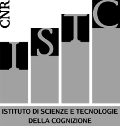We present a set of experiments in which simulated robots are evolved for the ability to aggregate and move together toward a light target. By developing and using quantitative indexes that capture the structural properties of the emerged formations, we show that evolved individuals display interesting behavioural patterns in which groups of robots act as a single unit. Moreover, evolved groups of robots with identical controllers display primitive forms of situated specialization and play different behavioural functions within the group according to the circumstances. Overall, the results presented in the paper demonstrate that evolutionary techniques, by exploiting the self-organising behavioural properties that emerge from the interactions between the robots and between the robots and the environment, are a powerful method for synthesizing collective behaviour.
Evolving mobile robots able to display collective behaviour
Publication type:
Articolo
Publisher:
MIT Press,, Cambridge, MA , Stati Uniti d'America
Source:
Artificial life 9 (2003): 255–267.
info:cnr-pdr/source/autori:Baldassarre G., Nolfi S., Parisi D./titolo:Evolving mobile robots able to display collective behaviour/doi:/rivista:Artificial life/anno:2003/pagina_da:255/pagina_a:267/intervallo_pagine:255–267/volume:9
Date:
2003
Resource Identifier:
http://www.cnr.it/prodotto/i/46715



